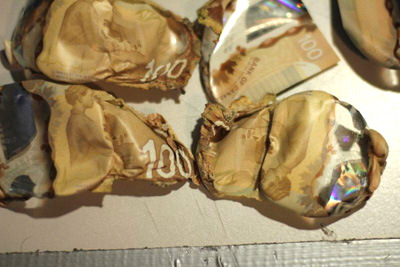Do Canadian polymer banknotes melt?
 That's the question Canadians are asking when reports surfaced last summer of banknotes which had melted because of exposure to heat. The notes in question were of course the new polymer notes. An woman from Ontario claimed that a few 100 Dollar bills melted together when they were stashed in her car near a heat source. Another woman claimed the same notes had melted together during a heatwave.
That's the question Canadians are asking when reports surfaced last summer of banknotes which had melted because of exposure to heat. The notes in question were of course the new polymer notes. An woman from Ontario claimed that a few 100 Dollar bills melted together when they were stashed in her car near a heat source. Another woman claimed the same notes had melted together during a heatwave.

The Canadian Press ordered internal documentation on this case from Canada's central bank. Did this provide the answer to the 'burning' question? Not quite: "In response to a formal request from The Canadian Press, the Bank of Canada released 134 pages of internal records - almost completely blanked out."
"The bank stands by its statements made this summer that polymer bank notes cannot be affected by the types and levels of heat as has been suggested in last summer's news reports, and has seen no evidence to the contrary," bank spokesperson Jeremy Harrison said. He noted the bank had performed "extensive and rigorous tests" prior to issuing the notes, including exposing them to extremes of 140 C and -75 C.
The central bank blanked out most of the texts because "Disclosing details of behind-the-scenes discussions about tales of melting banknotes could endanger national security or international relations". But the bank might have a point though regarding the durability of the new polymer notes:
Since the polymer series began circulating in November 2011, there were 232 cases of mutilated polymer notes submitted to the bank through last October, the bank says. That compares to an average of 3,000 total cases of mutilated notes per year.
The note in question:












No comments